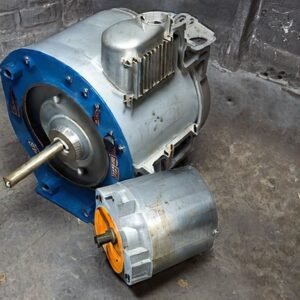How to calculate percentage slip of a 3Φ induction motor?
The percentage slip of an induction motor is a measure of the difference between the synchronous speed (the speed at which the rotor would rotate if it were perfectly aligned with the stator’s magnetic field) and the actual rotor speed. It is expressed as a percentage of the synchronous speed.

To calculate the percentage slip, use the following formula:
% Slip = (Synchronous Speed – Rotor Speed) / Synchronous Speed x 100
where Synchronous Speed is the speed at which the rotor would rotate if there were no slipping, and Rotor Speed is the actual speed of the rotor.
For example, if the synchronous speed of an induction motor is 1,800 RPM and the actual rotor speed is 1,770 RPM, the percentage slip would be:
% Slip = ((1,800 – 1,770) / 1,800 ) * 100
= (30/1800) x 100 = 1.67%.
In general, the percentage slip is higher at low speeds and decreases as the speed increases, eventually reaching zero at synchronous speed. The percentage slip is important because it directly affects the torque and efficiency of the motor. A higher percentage slip means that the rotor is not aligned with the stator’s magnetic field as well, resulting in less torque and lower efficiency. Conversely, a lower percentage slip means that the rotor is more closely aligned with the stator’s magnetic field, resulting in more torque and higher efficiency.
It’s important to note that the percentage slip is always a small, positive number (typically less than 5%) for the normal operation of an induction motor. If the percentage slip is too high, it can indicate a problem with the motor or the load it is driving.